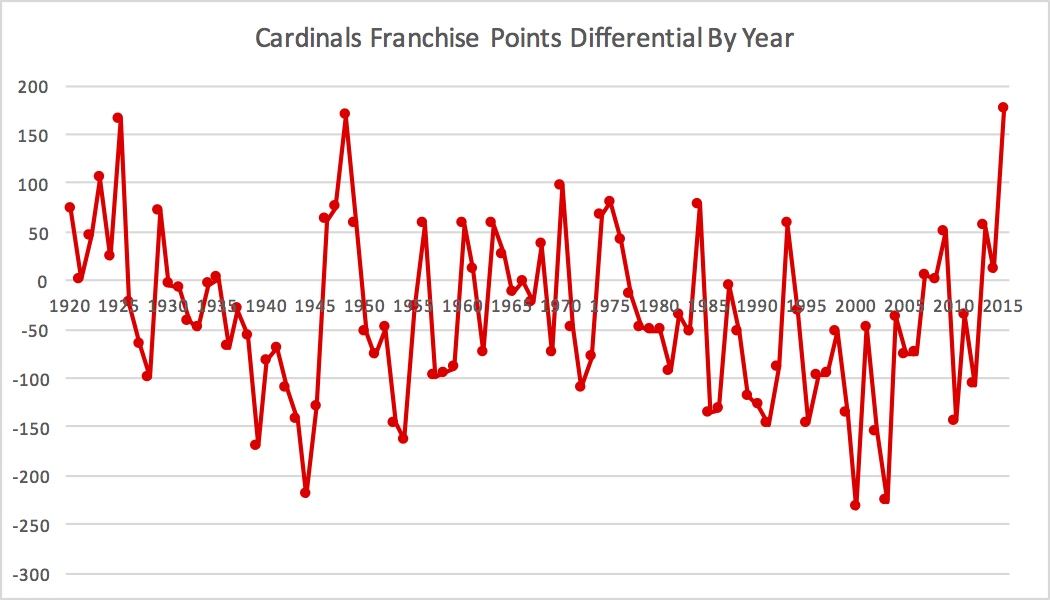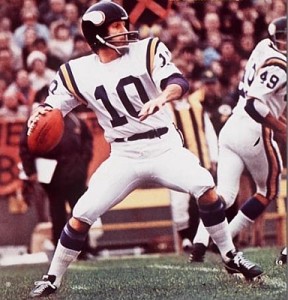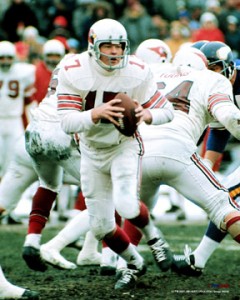In 2012, the Rams went 4-1-1 in the NFC West, but 3-7 against the rest of the NFL. The NFC West was pretty good that year, which made that even more remarkable: St. Louis had the best record in intradivision games of any NFC West team, but the worst interdivision record.
Then, last year, the Rams did it again, going 4-2 against the NFC West (best record, tied with Arizona) but a division-worst 3-7 against the rest of the NFL.
How often does it happen that a team does this? Perhaps more frequently than you might think. The Bills swept the Dolphins and Jets last year, but were swept by New England. Meanwhile, the Patriots dropped a game to both Miami and New York. But while the Patriots (8-2), Jets (7-3), and Dolphins (5-5) fared better against non-AFC East competition last year, the Bills went 4-6 outside of the division.
Since 2002, it has happened 24 times. Take a look:
| Year | Tm | Div | Intra W% | Inter W% | Div Strength |
|---|---|---|---|---|---|
| 2008 | NYJ | AFCEast | 0.667 | 0.500 | 0.650 |
| 2002 | ATL | NFCSouth | 0.667 | 0.550 | 0.638 |
| 2015 | BUF | AFCEast | 0.667 | 0.400 | 0.600 |
| 2005 | WAS | NFCEast | 0.833 | 0.500 | 0.600 |
| 2012 | STL | NFCWest | 0.750 | 0.300 | 0.575 |
| 2015 | STL | NFCWest | 0.667 | 0.300 | 0.575 |
| 2002 | NWE | AFCEast | 0.667 | 0.500 | 0.575 |
| 2002 | NYJ | AFCEast | 0.667 | 0.500 | 0.575 |
| 2012 | CAR | NFCSouth | 0.500 | 0.400 | 0.550 |
| 2012 | TAM | NFCSouth | 0.500 | 0.400 | 0.550 |
| 2012 | NOR | NFCSouth | 0.500 | 0.400 | 0.550 |
| 2009 | NYG | NFCEast | 0.667 | 0.400 | 0.550 |
| 2009 | CIN | AFCNorth | 1.000 | 0.400 | 0.525 |
| 2009 | MIA | AFCEast | 0.667 | 0.300 | 0.500 |
| 2011 | KAN | AFCWest | 0.500 | 0.400 | 0.475 |
| 2010 | OAK | AFCWest | 1.000 | 0.200 | 0.475 |
| 2006 | GNB | NFCNorth | 0.833 | 0.300 | 0.450 |
| 2011 | PHI | NFCEast | 0.833 | 0.300 | 0.450 |
| 2006 | ARI | NFCWest | 0.667 | 0.100 | 0.425 |
| 2013 | DET | NFCNorth | 0.667 | 0.300 | 0.425 |
| 2006 | CAR | NFCSouth | 0.833 | 0.300 | 0.425 |
| 2013 | DAL | NFCEast | 0.833 | 0.300 | 0.400 |
| 2010 | SFO | NFCWest | 0.667 | 0.200 | 0.325 |
| 2014 | ATL | NFCSouth | 0.833 | 0.100 | 0.263 |
The standard bearer for the most Rams team of the post-2002 era? All four AFC East teams won at least 7 games, and the division was 65% (24-16) of its interdivision games that year, the 2nd best season in AFC East history (1999). In those games, the Bills, Dolphins, and Patriots all went 7-3, while the Jets (with Brett Favre) went 5-5. You might think that means the Jets would have struggled in division games, but New York went 4-2, as did New England and Miami, while Buffalo went 0-6.







